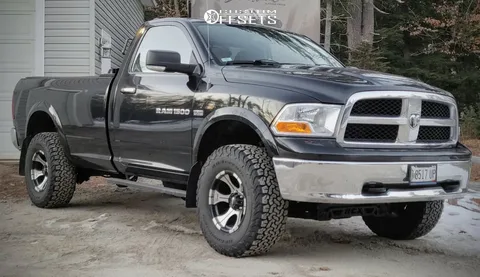H2: Understanding the Ram 1500 Tire and Wheel Setup
The Ram 1500 is one of the most popular full-size trucks on the market, known for its towing capacity, off-road capabilities, and customizable options. One way truck enthusiasts enhance both performance and aesthetics is through wheel and tire upgrades. A popular setup is the Ram 1500 35/11.50r17 with -12 offset
Upgrading to this tire and offset combination can significantly impact traction, handling, and the overall look of the vehicle. However, it’s essential to understand how these specifications affect the truck’s performance and compatibility.
H2: Key Specifications of 35/11.50R17 Tires
The 35/11.50R17 is a popular off-road tire size that balances ground clearance, traction, and road manners for lifted trucks like the Ram 1500.
H3: Tire Dimensions and Profile
The 35-inch diameter provides improved ground clearance, which is critical for off-road trails. The 11.50-inch width ensures a wider footprint, enhancing grip in mud, sand, and snow. This width also contributes to a more aggressive stance on the road.
H3: Load Rating and Performance
These tires are designed to handle heavy loads commonly associated with trucks, ensuring stability while towing or hauling. Many 35/11.50R17 tires also come with reinforced sidewalls, offering protection against punctures and damage during off-road use.
H3: Impact on Fuel Economy and Ride Comfort
While larger tires improve off-road capability, they can slightly reduce fuel efficiency due to increased rolling resistance. Ride comfort may also change, with a firmer feel on paved roads. Choosing tires with the right tread pattern can mitigate these effects.
H2: Understanding Wheel Offset and -12 Offset Implications
Wheel offset is critical when upgrading wheels and tires. A -12 offset pushes the wheel outward from the hub, giving the truck a wider stance and improved off-road clearance.
H3: What Does -12 Offset Mean?
Offset is measured in millimeters from the hub mounting surface to the centerline of the wheel. A negative offset (-12) means the hub is positioned toward the back of the wheel, effectively extending the wheel outward.
H3: Benefits of a Wider Stance
The wider stance improves stability during cornering, especially on uneven terrain. It also provides more room for larger brakes and adds an aggressive visual appearance that many truck enthusiasts prefer.
H3: Potential Fitment Challenges
Using a -12 offset can cause rubbing if the suspension or fender isn’t modified. Installing spacers, trimming fender liners, or adjusting the suspension lift may be necessary to avoid interference with the wheel wells.
H2: Off-Road and On-Road Performance
The 35/11.50R17 tires with a -12 offset are ideal for off-road performance, but they also influence on-road handling.
H3: Off-Road Traction and Durability
These tires excel in mud, sand, and rocky terrain. Their aggressive tread patterns allow for self-cleaning, which keeps grip consistent. The wider stance from the -12 offset improves stability when navigating obstacles.
H3: On-Road Handling Considerations
On paved roads, the larger tires may produce more road noise and slightly reduce handling precision. Proper alignment and suspension tuning can mitigate these effects, ensuring safe and comfortable daily driving.
H3: Suspension and Lift Requirements
For a perfect fit, many Ram 1500 owners combine this tire size with a 2–4 inch suspension lift. This prevents rubbing and allows the truck to maintain full articulation during off-road adventures.
H2: Choosing the Right Wheel and Tire Combination
Selecting the correct wheel and tire combination is crucial for safety, performance, and aesthetics.
A -12 offset wheel paired with 35/11.50R17 tires is aggressive and visually striking, but it’s important to balance the truck’s stance with its suspension, fender clearance, and brake setup.
Considerations include:
- Wheel width: Must match the tire width for proper bead seating.
- Brake clearance: Ensure larger wheels don’t interfere with factory or upgraded brakes.
- Alignment adjustments: Larger tires and different offsets may require professional alignment to maintain handling and prevent uneven tire wear.








